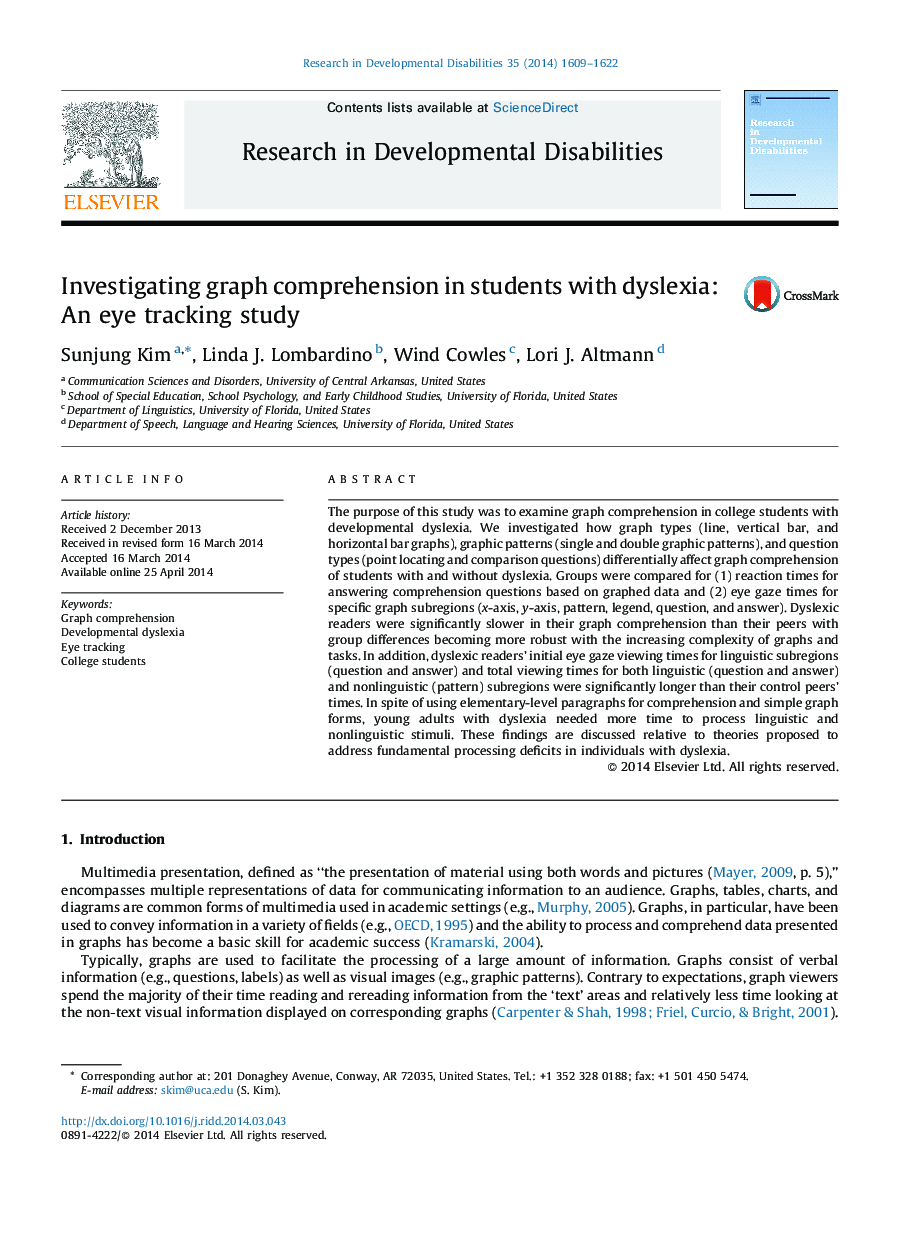| Article ID | Journal | Published Year | Pages | File Type |
|---|---|---|---|---|
| 10317237 | Research in Developmental Disabilities | 2014 | 14 Pages |
Abstract
The purpose of this study was to examine graph comprehension in college students with developmental dyslexia. We investigated how graph types (line, vertical bar, and horizontal bar graphs), graphic patterns (single and double graphic patterns), and question types (point locating and comparison questions) differentially affect graph comprehension of students with and without dyslexia. Groups were compared for (1) reaction times for answering comprehension questions based on graphed data and (2) eye gaze times for specific graph subregions (x-axis, y-axis, pattern, legend, question, and answer). Dyslexic readers were significantly slower in their graph comprehension than their peers with group differences becoming more robust with the increasing complexity of graphs and tasks. In addition, dyslexic readers' initial eye gaze viewing times for linguistic subregions (question and answer) and total viewing times for both linguistic (question and answer) and nonlinguistic (pattern) subregions were significantly longer than their control peers' times. In spite of using elementary-level paragraphs for comprehension and simple graph forms, young adults with dyslexia needed more time to process linguistic and nonlinguistic stimuli. These findings are discussed relative to theories proposed to address fundamental processing deficits in individuals with dyslexia.
Related Topics
Life Sciences
Neuroscience
Behavioral Neuroscience
Authors
Sunjung Kim, Linda J. Lombardino, Wind Cowles, Lori J. Altmann,
